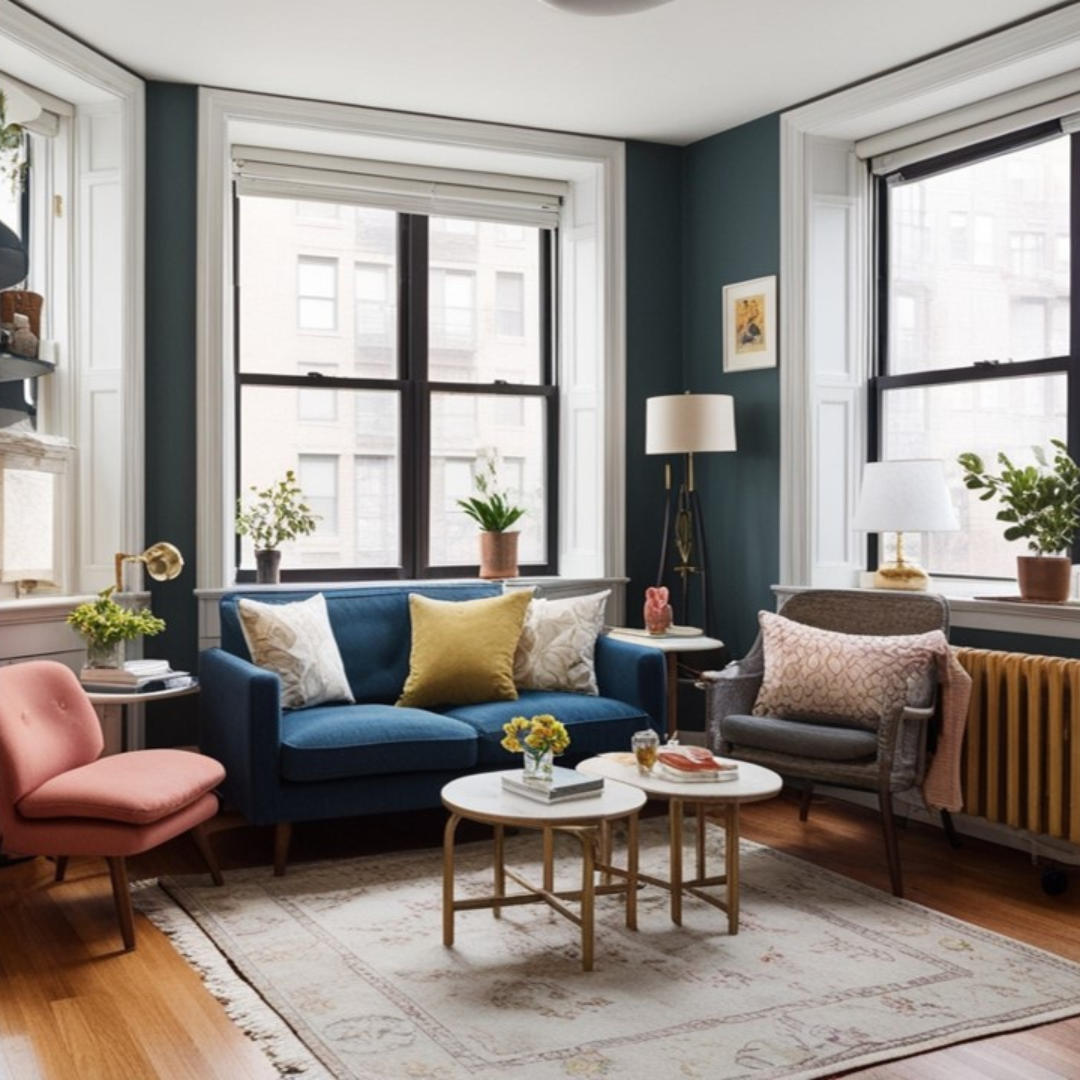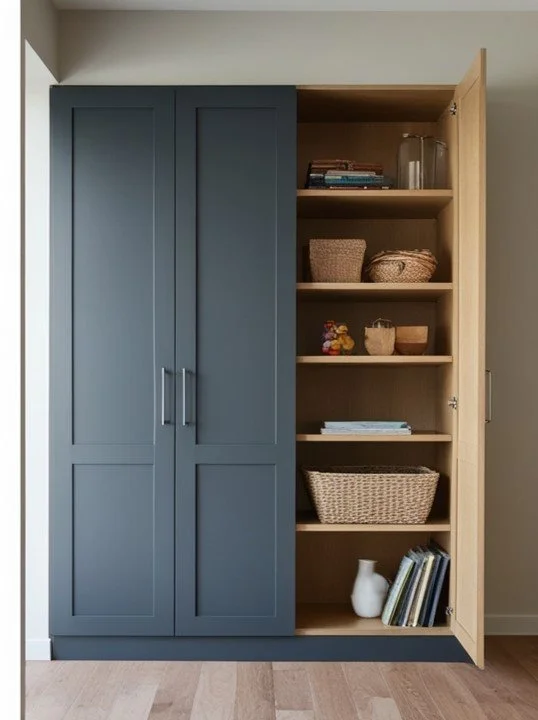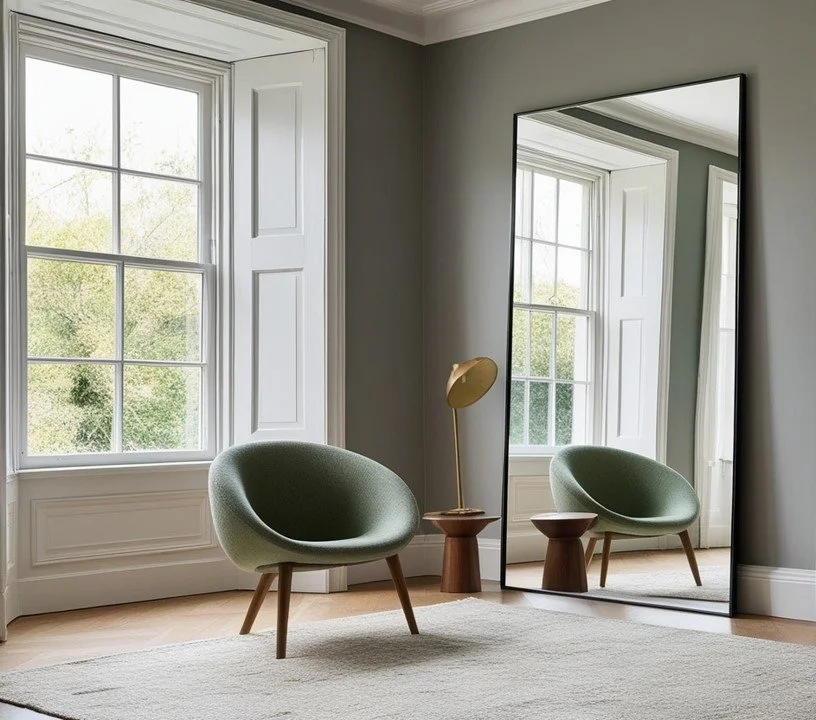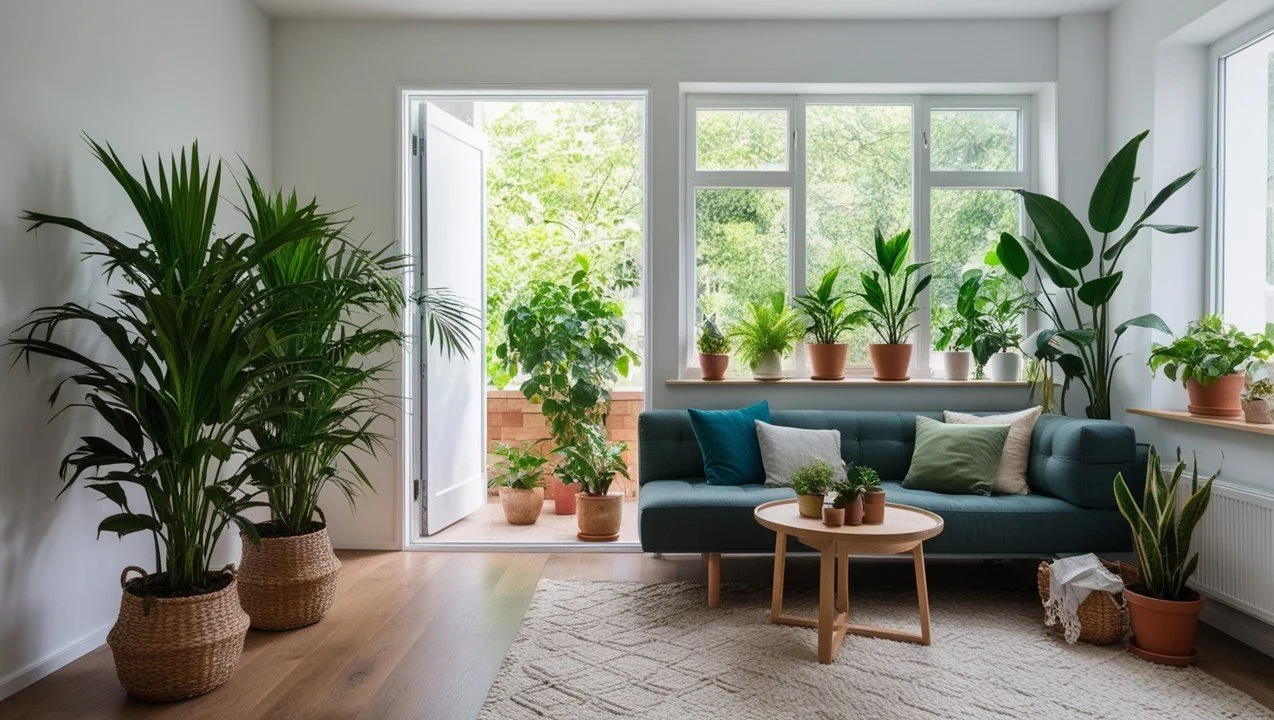By Heather James
Designing a home with limited space can sometimes be difficult. in this article I’ll reveal the best tricks to make the smallest of rooms look and feel larger. If you’re a resident in a small apartment or interested in using a small space in your house, the key is creativity. I’ve realized that small spaces can also be comfortable, inviting, and stylish by using multiple-use furniture, innovative storage solutions, and optimal accessories placement.
Let’s talk about some invaluable hints almost you can use to maximize the best features of whatever small-scale house you may be living in.
Use Multi-Functional Furniture to Save Space
Using multi-functional furniture gives you a flexible way to make the most of your space while adding a touch of elegance. You shouldn’t have to worry about having too much furniture, even if you entertain guests regularly. Overloading a room with excess furniture is a bad thing because it just hides your usable space and doesn’t allow people to feel comfortable. That said, it’s better to have furniture that’s versatile and changeable, so your room has a better layout and flow.
For instance, dining tables that expand by adding leaves or that fold out give you the flexibility to accommodate more guests.
Stacking espresso and end tables are great for smaller get togethers because they can be compiled to one side when not being used.
And the “old-school” folding tray tables are another way to add serving space that can be tucked away in a corner or in a closet when not being used.
These useful and convenient options keep your place tidy and organized and allow you to be ready for any situation – from planned gatherings to friends that drop by.
Use Vertical Space for Storage
One tried-and-true way of increasing storage in small spaces is to use vertical space.
So, using wall height maximizes storage without impacting your floor space. It creates a sense of “more space” by extending all the way to the ceiling, providing an ideal way to store books, decor, or kitchen utensils on the shelves.
Whether for storing pots and pans in the kitchen or bags and hats in your entryway, wall-mounted racks or hooks come in very handy.
Choosing taller cabinets or bookcases gives you vertical storage without relying on your room’s width to shoulder the burden of organizing your stuff.
You’ll also want to think creatively about places like the back of interior doors, under used corners, or inside of cabinets or small closets.
Using over-the-door hangers or shoe racks, accessories shelves, or hand-held caddies for cleaning supplies, can optimize every available space.
This way, you’ll create better separation in your storage areas while also making your rooms look and feel more open and spacious.
Use Mirrors to Make Rooms Feel Larger
Using mirrors in interior design is one good strategy for making a room look bigger and more spacious.
They reflect light and tend to give the illusion of depth and brightness which will always be very helpful in enhancing the living spaces, especially if it’s in a small room.
For an open feeling, large mirrors can be placed perpendicular to sunny windows to allow as much light as possible into the room.
You can also use a set of multiple small mirrors on the wall in a gallery wall style – doing this both enhances your decor and visually enlarges the space in your room.
Tip: Select mirrors that fit the space and design style of your room. Miror frames are a great way to tie in a metal tone like brass or silver in your room, just remember to pepper that metal tone throughout your room to tie in other décor pieces. If you’re not a fan of metal tones, black is a great unifier color for mirrors, picture frames, and décor because it goes with any design style.
By using mirrors strategically, you can completely transform the look of your home, making it feel more spacious, airy, and stylish—without needing to do any major renovations.
Choose Light Colors to Open Up Small Spaces
Another great way to open small spaces is to choose light colors for your interior decor.
Soft white, pale gray, and pastel paint colors, wallpaper, or curtains work better than dark colors in small rooms because they allow more light in, making the room look larger.
Painting the walls and ceilings in these light shades helps create a cohesive look, making your rooms feel more connected and open.
You can also add subtle “separation” using furniture and accessories in lighter shades. Choosing light colors for larger pieces like sofas and dining tables can help the space feel more open and less cluttered.
For variety, think about enhancing the walls with even more brightness by using accessories, furniture, pictures, and/or flowers in lighter colors. This balance preserves the open feel but also enables you to make some statements about yourself.
So, using light colors help you turn your small spaces into the most attractive and comfortable spots!
Choose a Space-Saving Mattress for Small Bedrooms
Choosing a space-saving mattress is important for maximizing comfort in small bedrooms without sacrificing coziness.
For beds, consider a firm memory foam mattress. It offers good support, and it also helps to follow the contours of your body, which is essential for helping you have a good sleep.
Choose folding or flip-over mattresses if you want the flexibility to use the space for other purposes. These mattresses can be easily stored away when you need the room for something else. And some of them can even double as extra chairs, sofas, or even be transformed into a guest bed when needed.
To save space, choose mattresses that can be easily moved and washed.
When you choose the appropriate space-saving mattress, it becomes easy to maximize every inch in the small bedroom without compromising on the comfort of your room or beds.
Maximize Natural Light to Enhance the Room’s Openness
Natural light has always been identified as one of the strategies for improving the openness of a room.
First, windows should be clear; use curtains that don’t entirely obscure the window but allow light to get into the room.
Incorporating living plants in small spaces is important because they improve air quality, making your rooms healthier and more refreshing.
Choose lighter paint colors for the walls and ceilings, because they reflect more light than darker shades. This will help make the space feel larger, especially if you have lower ceilings.
The position of your furniture also plays an important role; don’t place large pieces in front of the windows. Instead, place your seating to face the windows. Here’s why:
Natural Light: allows you to take advantage of sunlight, making the space feel brighter and cheerier.
Views: If you have a nice view outside, facing the windows enhances your enjoyment of the scenery.
Connection with Nature: Being positioned towards windows can create a stronger connection to the outdoors, which can help you to feel calmer.
Conversation Flow: Arranging seating to face windows can also create a more welcoming layout for conversations because it allows for a comfortable focal point.
Focusing on maximizing natural light can create a bright, inviting room that feels more open and refreshing.
Conclusion
Designing a small space doesn’t have to be daunting; in fact, it can be a fun challenge. By embracing creativity and implementing these practical tips, you can create a home that feels spacious, stylish, and unique.
From choosing versatile furniture to enhancing natural light and adding personal touches, every small change contributes to a larger impact. So, get inspired and start transforming your space into a cozy home that reflects your personality and enhances your daily life!
Read Next:
Creating Comfort in Small Spaces: Tips for an Eco-Friendly Home
Just because you’re in a small space doesn’t mean you have to skimp on style or comfort. Join me as we explore how to maximize every inch with eco-friendly design tips, smart upcycling projects, and sustainable choices that make your home feel inviting and stylish. Let’s transform those snug corners into the coziest spots in your place!
Join the Fun!
If you enjoyed this post and you want to keep seeing my weekly blog, the best way to do that is to subscribe.
You can subscribe by downloading my 11 Secrets Only Designers Know to Make Your Space Rock. If you’re curious about how decorators and designers make a home look magazine ready, you’ll love taking a gander at these 11 secrets. You’ll learn how to style your room from the floor up and it will work for ANY space you have.
I write about small space design and decorating, sustainable furniture options, positive self care and a variety of do-it-yourself home décor.
I’d love to connect with you!
“Michael Helwig was top-notch, very professional and responsive to my needs. He allowed me time to explore ideas and try out a variety of combinations until we found the perfect fit. Michael provided detailed information and offered beautiful ideas to make my dream living room become a reality. The furniture he sourced has totally transformed my living room space. Everyone that has seen my new living room has one word, WOW! A special thank you to Michael for a wonderful experience.”
“Michael was very knowledgeable and guided us, with great patience and good humor, through the process of designing our dining room and helping us find the perfect sleeper sofa. He offered really helpful advice when we asked questions - which was often - but at no time did we ever feel pushed. He helped me when I felt like I couldn’t make one more decision. When my new furniture finally arrived I realized everything down to the pillows was perfect. I couldn’t be happier!”
The opinions and views expressed in any guest blog post do not necessarily reflect those of Michael Helwig Interiors or its Principal, Michael Helwig. Michael Helwig Interiors, and Michael Helwig, do not have any affiliations with any products or services mentioned in the article or linked to therein. Guest Authors may have affiliations to products mentioned or linked to in their articles or bios.
Hello, I'm Heather. Through my pen, I delve into the heart of design, uncovering the stories behind emerging trends and celebrated classics. My writing serves as a bridge, connecting readers with the innovative minds and transformative ideas that shape our visual and functional world.














